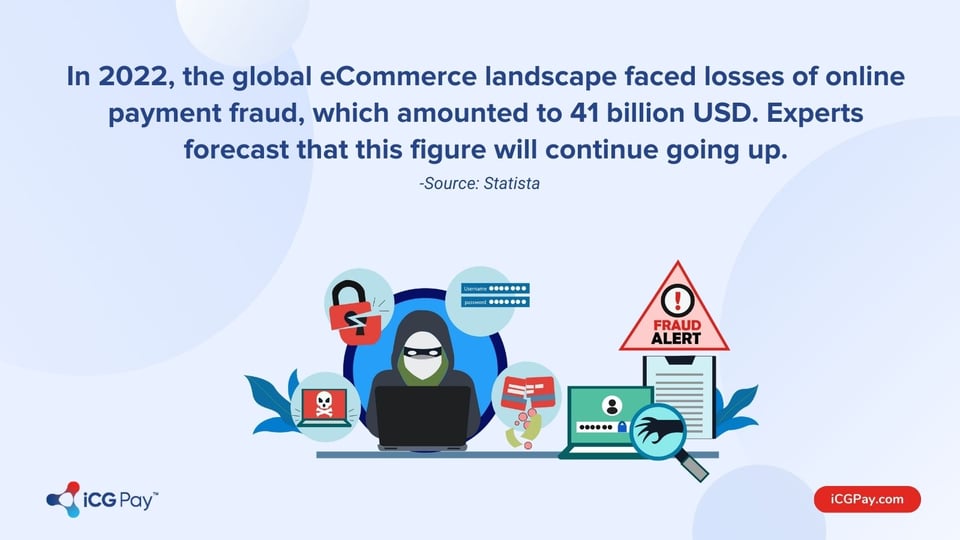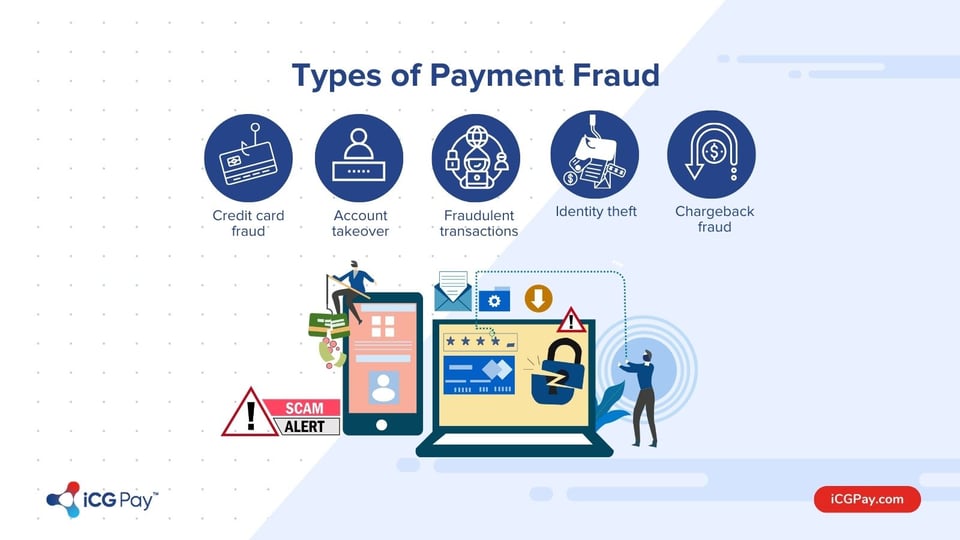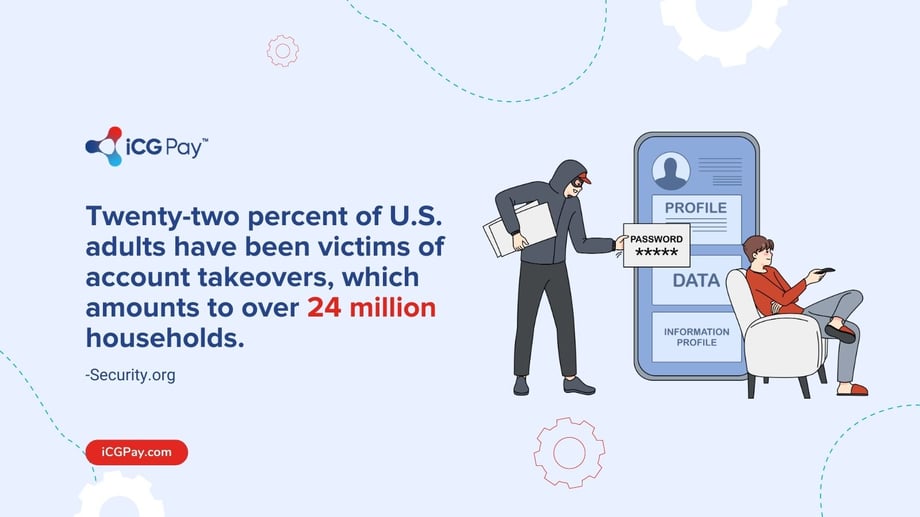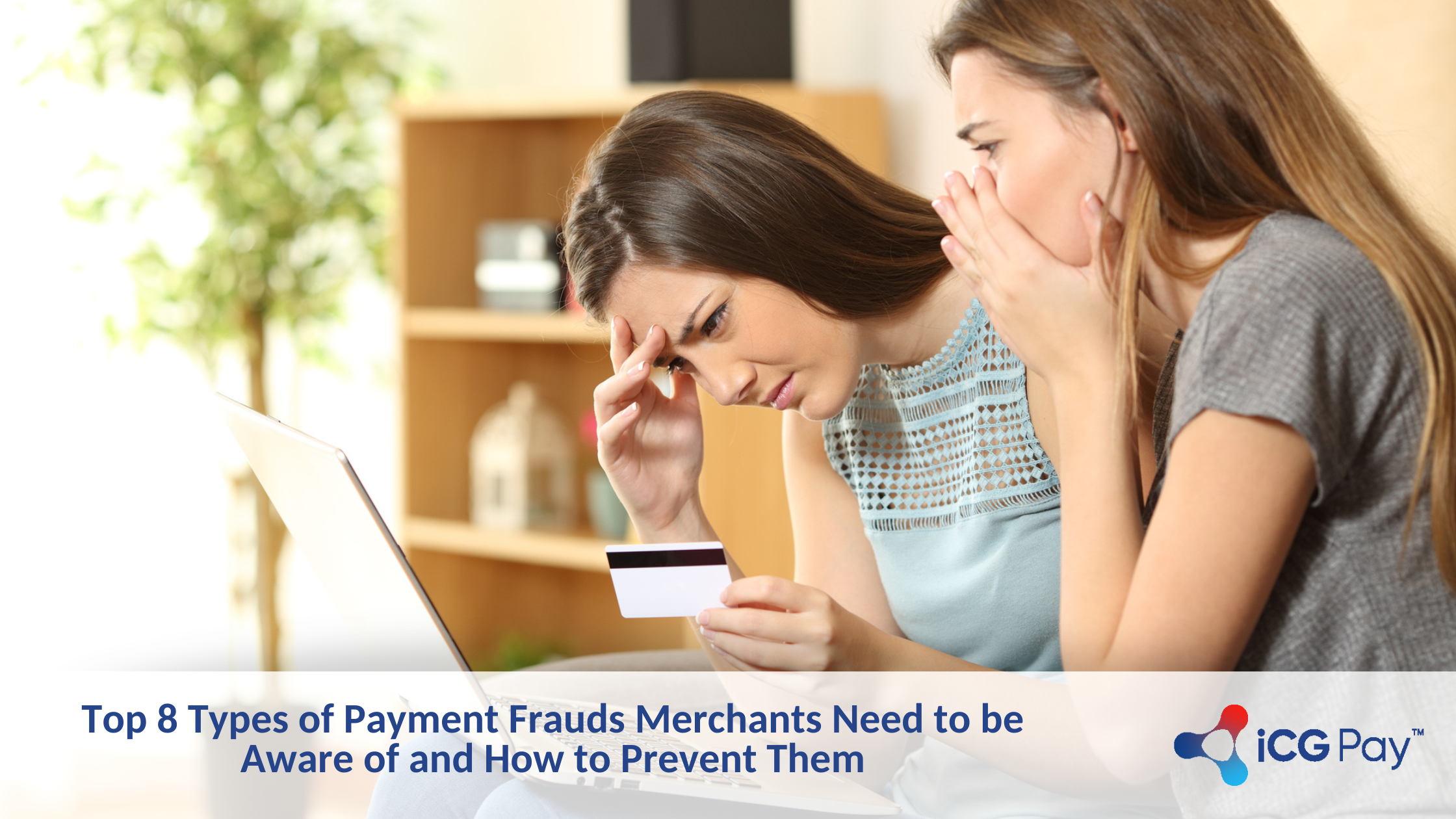In 2022, eCommerce businesses were hit by 41 billion USD in online payment fraud, according to Statista. This troubling trend is expected to continue, with experts forecasting a significant increase in the coming years.
In the face of these challenges, as a merchant, you must remain vigilant and proactive to safeguard your business reputation and customers’ financial information.
As we venture deeper into the digital age, fraudsters have adapted and refined their tactics, becoming more cunning and resourceful. This relentless evolution demands you to have equally dynamic and multifaceted responses.
This blog post will show you the types of fraud you need to be wary of.

What Are Payment Frauds?
Payment frauds are deliberate and unauthorized deceptive activities that aim to manipulate or bypass payment systems to steal funds or sensitive information from merchants and/or customers.
These scams can take various forms:
- Credit card fraud
- Account takeover
- Fraudulent transactions
- Identity theft
- Chargeback fraud
These are a major concern for merchants as they cause financial losses. If you lose a significant amount to fraud each year, your business will feel the pinch.
However, it’s not just the monetary impact that’s worrisome. Payment frauds also damage your reputation and customer trust.
Maintaining customer trust is crucial for your business’s success in today's age of social media and online reviews. When your business falls victim to payment fraud, customers lose confidence in you and share their negative experiences online, affecting your business’s credibility and future growth.

Common Types of Payment Fraud
As a merchant, knowing the common types of payment fraud is the first line of defense in safeguarding your business and maintaining customer trust.
Chargeback Fraud
Commonly known as “friendly fraud,” it occurs when a customer makes a legitimate purchase but later disputes the charge with their credit card issuer. They claim the product was never received or was unsatisfactory.
This fraud is particularly challenging for merchants, as you may lose both the product or service and the payment.
Chargeback fraud happens in various scenarios, including a customer claiming:
- They never received the product or service
- The product was not as described
- They did not authorize the transaction
Chargebacks are frustrating, and you may not have the evidence to refute the claim, leading to lost revenue and inventory. Moreover, too many chargebacks can result in a high-risk designation for your account, leading to increased processing fees and potential account termination.
Identity Theft
Everybody has heard of identity theft.
Investopedia describes it as “when someone steals your personal information—such as your Social Security Number, bank account number, and credit card information.”
Fraudsters then use the stolen personal information to make unauthorized purchases or open new accounts in the victim’s name. Leaving you and the victim to bear the financial burden.
Always monitor your accounts for suspicious activities, such as unusual transaction volumes or unusual locations.
Counterfeit Card Fraud
In 2013, between November 27 and December 15, hackers stole the personal and financial information of 40 million Target customers. The stolen information included customer names, credit or debit card numbers, expiration dates, and three-digit security codes.
Fraudsters use this stolen credit card information to create counterfeit cards or card-not-present transactions to make unauthorized purchases.
When you accept such payments as a merchant, you often face chargebacks, lost revenue, and damage to your reputation.
Refund Fraud
If you have a refund policy for your products or services, you should be aware of the potential for refund fraud.
Refund fraud occurs when a customer requests a refund for a product or service they have legitimately purchased but then provide false information or return a different item to receive a refund.
Scammers use lax refund policies or weak return processes to commit refund fraud.
Man-in-the-Middle (MITM) Attacks
MITM attacks are particularly challenging to detect, as they occur invisibly, without the knowledge of either the merchant or the customer.
This is how the fraudsters do it: they intercept communication between you and a customer to conduct Man-in-the-Middle attacks. They exploit vulnerabilities in software or intercept Wi-Fi signals to access sensitive data. They then steal your or your customers’ information, such as credit card details or login credentials.
Account Takeover Fraud
Picture this: you wake up one morning to discover that your online account has been hacked and an unknown person has taken over your identity. They now have access to your personal and financial information, allowing them to transact in your name.
Twenty-two percent of U.S. adults have been victims of account takeovers, which amounts to over 24 million households.
—Security.org
Account takeover can have significant consequences for you, as the fraudster can:
- Change account information
- Lock you out of the account
- Make unauthorized transactions

Phishing
Imagine receiving an email that looks like it’s from your bank, asking you to provide your login credentials or personal information.
You might be tempted to comply, thinking it’s a routine security check. However, you may not realize that this is a phishing attack, a type of payment fraud growing in sophistication and prevalence.
In phishing, attackers create fake emails or websites that look like legitimate sources, such as banks or eCommerce sites, to lure unsuspecting victims into providing their personal and/or financial information.
For instance, a fraudster might create an email address like “support@amaz0n.com” (with a zero instead of an “o”) in an attempt to trick customers into believing that the email is from Amazon.
Card-Not-Present (CNP) Fraud
Card-Not-Present fraud is a deceptive transaction that occurs when a payment card isn’t physically shown to a merchant for visual verification.
The transaction typically occurs online or over the phone, creating an environment where it’s more challenging to confirm the cardholder’s identity.
Since the cardholder’s identity cannot be verified, the risk of fraud is higher, and you, as the merchant, often bear the responsibility for any losses.
Best Practices to Prevent Payment Fraud
The following guidelines will help you fortify your defenses against payment fraud and ensure the security of your transactions and your customers:
Leverage Fraud Detection Tool
Use advanced fraud detection solutions to identify and prevent suspicious transactions. They include:
- SEON
- Sift
- Kount
Check this TrustRadius list of the top fraud detection software.
These tools include artificial intelligence, machine learning, and rule-based systems to analyze transaction patterns and detect anomalies that could indicate fraud.
Adopt Secure Payment Gateways
Choose a payment gateway with robust security measures like encryption, tokenization, and support for secure payment protocols like 3D Secure.
These features help you protect sensitive cardholder data during transmission and reduce the risk of unauthorized access.
Maintain PCI Compliance
The Payment Card Industry Data Security Standard (PCI DSS) is a set of security standards that all merchants must follow to protect their customers’ credit card information.
Regularly assess your security infrastructure and processes to ensure compliance with these industry best practices.
Monitor Transactions in Real-Time
Keep a close eye on transaction data to identify and investigate any unusual activity.
How do you do this? Set up alerts for suspicious transactions, such as multiple failed payment attempts, high-value transactions, or rapid-fire transactions from the same IP (Internet Protocal) address.
Educate Employees on Fraud Prevention
“Your company is only as extraordinary as your people.” —Ekaterina Walter, Contributor, Forbes.
Provide regular training to your employees on the latest payment fraud tactics and the steps they can take to prevent them.
Also, establish clear procedures for handling suspicious transactions and ensure your team knows how to respond in case of a suspected fraud attempt.
How to Respond to Payment Fraud
How do you respond when faced with payment fraud? Here are the steps you can take when dealing with payment fraud:
- Incident Response Plan: Develop and maintain a comprehensive incident response plan outlining the actions to be taken in case of payment fraud.
- Swiftly Investigate: Upon detecting potential fraud, conduct a thorough investigation to confirm the incident, identify the scope, and determine the extent of the damage. This will help you take appropriate actions to mitigate the impact and prevent further occurrences.
- Notify Relevant Parties: If a data breach or fraudulent activity is confirmed, promptly notify the affected customers, financial institutions, and payment processors.
- Customer Communication: Keep open communication lines with your customers. Timely and honest communication helps maintain customer trust during a difficult situation.
- Remediation and Recovery: Implement measures to contain the incident and prevent further damage. This involves temporarily suspending specific payment channels, enhancing security measures, or working with external experts to address vulnerabilities.
- Review and Learn: After resolving the incident, conduct a post-mortem analysis to identify the root cause and lessons learned. Based on these insights, you should update your security protocols, fraud prevention strategies, and incident response plan to minimize the risk of future occurrences.
Real-World Example of Successful Payment Fraud Prevention Strategies - Stripe and Radar
Stripe is a major payment processing provider that uses machine learning and a vast dataset of transactions to identify and block fraudulent transactions.
Radar’s adaptive algorithms continuously learn and improve, helping merchants stay ahead of emerging fraud trends. This proactive approach to fraud prevention has significantly reduced chargebacks and financial losses for businesses using Stripe’s platform.
Conclusion
Investing in the right tools and strategies will safeguard your business and position you as a responsible and trustworthy partner in today’s competitive digital marketplace.
Consider partnering with a reputable payment processor platform like us at iCG Pay, formerly known as iCheckGateway.com. We combine cutting-edge technology with comprehensive fraud prevention measures, helping you reduce the burden of fraud management.



